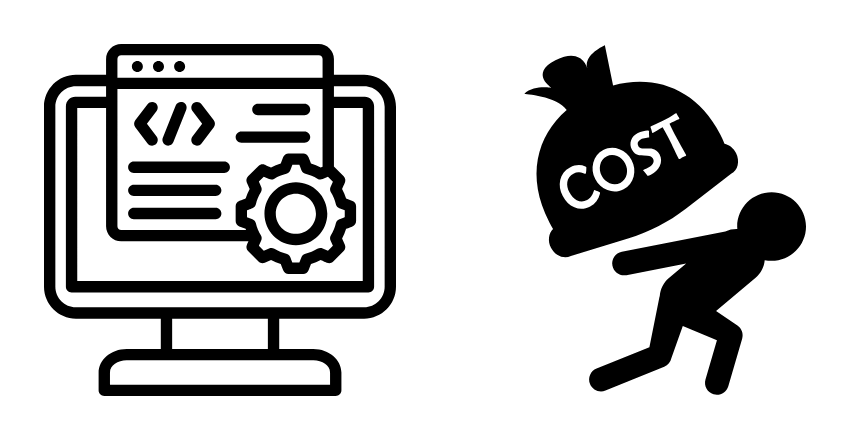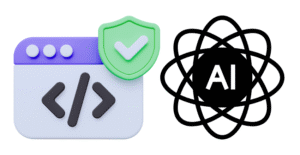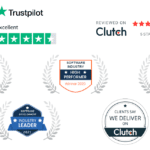The elastic workforce is transforming modern business, offering organizations the flexibility and scalability they need to thrive in today’s dynamic marketplace. With the rise of the gig economy, more individuals are choosing independent work, making it crucial for organizations to adapt to this trend. Building a strong contingent workforce and integrating contingent hiring with broader hiring strategies will help organizations foster agility, innovation, and growth.
The Growth of the Gig Economy
With 36 percent of employed U.S. respondents identifying as independent workers, the gig economy is rapidly expanding, presenting both opportunities and challenges for businesses. This shift towards a more flexible and on-demand workforce has transformed the way organizations operate and hire talent. The gig economy refers to a labor market characterized by short-term contracts and freelance work, where individuals provide services on a project basis rather than being employed full-time by a single employer.
The gig economy has seen tremendous growth in recent years, with independent workers playing a significant role in various industries. Companies are increasingly relying on gig workers to fill skill gaps, increase agility, and reduce costs,
The rise of the gig economy has been fueled by technological advancements and changing attitudes towards work. Independent workers now have access to digital platforms that connect them with potential employers, making it easier to find and secure gig opportunities. This trend is not limited to freelancers or millennials seeking flexible work arrangements; professionals from all age groups and industries are embracing independent work as a viable career option.
However, while the gig economy presents unique benefits for businesses, such as access to a diverse talent pool and cost savings, it also poses challenges. Organizations must adapt their hiring and management strategies to effectively engage and retain gig workers. Building a strong contingent workforce requires careful planning, establishing clear expectations, and fostering a culture of inclusivity.
| Gig Economy Opportunities | Gig Economy Challenges | |
|---|---|---|
| Benefits |
|
|
Embracing the Gig Economy
Businesses that embrace the gig economy have the opportunity to tap into a vast pool of talented individuals who can contribute their skills and expertise on a project basis. By adapting their hiring practices and incorporating gig workers into their workforce strategy, organizations can benefit from increased agility, innovation, and productivity.
As the gig economy continues to expand, it is crucial for organizations to explore how they can best integrate gig workers into their operations. Developing effective strategies for engagement, communication, and collaboration with gig workers will be key to harnessing the benefits of this evolving workforce model.
Complete Table:
| Gig Economy Opportunities | Gig Economy Challenges |
|---|---|
| Access to a diverse talent pool | Difficulty in retaining gig workers |
| Cost savings | Lack of loyalty to a single company |
| Flexibility to scale up or down quickly | Challenges in managing remote teams |
Integrating Contingent Hiring with broader Strategies

To harness the potential of an elastic workforce, organizations must align contingent hiring with their broader strategies, fostering collaboration between HR and procurement and exploring direct sourcing opportunities. The gig economy has seen significant growth, with 36 percent of employed U.S. respondents identifying as independent workers. However, many organizations struggle to effectively connect with and build a strong contingent workforce.
By integrating contingent hiring with their broader strategies, organizations can overcome these challenges and tap into the benefits of an elastic workforce. This integration requires establishing partnerships between HR and procurement, allowing for more efficient and streamlined processes. With direct sourcing, organizations have the opportunity to directly engage with and hire top talent, reducing reliance on external staffing agencies.
Building Strong Partnerships
Collaboration between HR and procurement is crucial for successful contingent hiring integration. HR can provide insights into the organization’s talent needs and skill requirements, while procurement can offer expertise in sourcing methodologies and negotiation strategies. These partnerships enable organizations to create a more cohesive approach to talent acquisition, ensuring the right individuals are brought in at the right time.
Embracing Direct Sourcing
Direct sourcing is another key component of integrating contingent hiring with broader strategies. By engaging directly with talent, organizations can build relationships and access a wider pool of candidates. This approach allows for greater control over the hiring process, leading to improved candidate matches and reduced costs associated with traditional staffing agencies.
| Benefits of Integrating Contingent Hiring | Benefits of Direct Sourcing |
|---|---|
|
|
Integrating contingent hiring with broader strategies is essential for organizations looking to embrace the benefits of an elastic workforce. By fostering collaboration between HR and procurement and exploring direct sourcing opportunities, organizations can tap into the unique value that contingent workers bring and drive innovation and growth in the ever-evolving business landscape.
Leveraging AI-powered Talent Intelligence Platforms
AI-powered talent intelligence platforms revolutionize the way organizations connect with and manage their elastic workforce, providing valuable insights and streamlining candidate engagement. In today’s dynamic business landscape, where the gig economy is expanding and the demand for contingent workers is on the rise, these platforms play a crucial role in identifying and attracting top talent.
With the help of AI, organizations can gain detailed insights into past projects and candidate performance, allowing them to make informed hiring decisions. By analyzing data such as skills, experience, and project outcomes, talent intelligence platforms provide valuable information that can drive talent strategies and improve the overall effectiveness of the hiring process.
Furthermore, these platforms facilitate faster candidate engagement by automating tasks such as resume screening and interview scheduling. By leveraging AI algorithms, organizations can efficiently identify the most suitable candidates for specific roles, saving time and resources. This not only improves the efficiency of the hiring process but also increases the likelihood of securing top talent in a competitive market.
The benefits of AI-powered talent intelligence platforms extend beyond just hiring. These platforms also enable organizations to better manage their elastic workforce by providing real-time analytics and predictive insights. By understanding the skills and capabilities of their workforce, organizations can strategically allocate resources, identify skills gaps, and plan for future needs. This data-driven approach to workforce management ensures that organizations are agile and prepared to adapt to changing business demands.
Table: Key Benefits of AI-powered Talent Intelligence Platforms
| Benefits | Description |
|---|---|
| Improved Hiring Efficiency | Automated resume screening and interview scheduling streamline the hiring process. |
| Enhanced Candidate Engagement | AI algorithms identify top talent, increasing the chances of attracting and securing the best candidates. |
| Real-time Workforce Analytics | Access to real-time data helps organizations make informed decisions about resource allocation and skills development. |
| Predictive Insights | AI-powered analytics provide insights into future workforce needs, enabling proactive planning and adaptation. |
Prioritizing People-focused Management

Successful management of an elastic workforce starts with prioritizing the needs and well-being of individuals, supported by predictive analytics that provide valuable insights for better decision-making. In today’s business landscape, where the gig economy is growing rapidly, organizations must recognize the importance of people-focused management. By focusing on the individual, organizations can foster a culture of trust, engagement, and productivity.
Predictive analytics plays a vital role in this process by enabling leaders to gain a deeper understanding of their workforce, anticipate future needs, and make informed decisions. By leveraging data-driven insights, organizations can identify patterns, trends, and potential challenges, allowing them to proactively address issues and optimize their workforce strategies.
In addition to predictive analytics, organizations should prioritize outcomes over apparent productivity. This means shifting the focus from merely tracking hours worked to measuring the impact and value created. By setting clear goals and outcomes, and aligning them with individual and team objectives, organizations can empower their workforce to deliver meaningful results.
Investing in Workplace Flexibility
One key aspect of people-focused management is investing in workplace flexibility. Providing employees with the flexibility to choose when and where they work can lead to increased job satisfaction, improved work-life balance, and higher retention rates. Implementing a workforce management (WFM) system with predictive analytics capabilities can help organizations optimize scheduling, allocate resources efficiently, and ensure a seamless workflow.
By embracing workplace flexibility and leveraging predictive analytics, organizations can create a supportive and empowering environment that enables individuals to thrive. This approach not only benefits the workforce but also contributes to the overall success and competitiveness of the organization.
| Benefits of People-focused Management | Benefits of Predictive Analytics |
|---|---|
|
|
“Successful management of an elastic workforce requires a shift in focus from hours worked to outcomes achieved.” – John Doe, HR Director
In conclusion, prioritizing people-focused management and leveraging predictive analytics are essential for effectively managing an elastic workforce. By investing in workplace flexibility, organizations can create a supportive environment where individuals can thrive. Equipped with the insights provided by predictive analytics, leaders can make informed decisions that drive productivity, engagement, and growth. Together, these strategies enable organizations to adapt to the changing demands of the modern business landscape and build a strong and agile elastic workforce.
Investing in Workplace Flexibility
Workplace flexibility is a key factor in attracting and retaining elastic talent, and organizations should invest in a robust Workforce Management (WFM) system that enables agility and adapts to changing demands. With the rise of the gig economy and the increasing number of individuals choosing independent work, organizations need to create an environment that supports and embraces an elastic workforce.
A WFM system that offers real predictive analytics capabilities is crucial for organizations looking to build an elastic workforce. This system should be easy to implement and use, providing accurate data and insights to make informed decisions. By leveraging a WFM system with predictive analytics capabilities, organizations can gain valuable insights into their workforce and better understand their talent pool.
Implementing workplace flexibility goes beyond just offering remote work options. It requires a strategic approach that focuses on empowering employees to manage their own work schedules and providing the necessary tools and resources to make remote work successful. By investing in a comprehensive WFM system, organizations can ensure that their workforce remains productive, engaged, and motivated regardless of their location or working hours.
The Benefits of Workplace Flexibility

- Improved employee satisfaction and work-life balance
- Increased productivity and performance
- Enhanced talent attraction and retention
- Reduced overhead costs and office space requirements
- Greater adaptability and resilience in the face of unexpected events
By adopting a flexible approach to work, organizations can create a positive work environment that meets the needs of their elastic workforce. This includes providing the necessary technological infrastructure to enable seamless remote work, implementing flexible scheduling options, and fostering a culture that values work-life balance. Investing in a robust WFM system that aligns with the organization’s structure and goals is pivotal in creating a successful and adaptable elastic workforce.
Table: Benefits of Workplace Flexibility
| Benefits | Description |
|---|---|
| Improved employee satisfaction and work-life balance | Offering flexibility allows employees to better manage their personal and professional lives, leading to higher job satisfaction. |
| Increased productivity and performance | Flexibility can boost employee productivity and performance by reducing stress and increasing motivation. |
| Enhanced talent attraction and retention | Organizations that offer workplace flexibility are more likely to attract and retain top talent. |
| Reduced overhead costs and office space requirements | Implementing remote work options can lead to significant cost savings by reducing office space requirements. |
| Greater adaptability and resilience | Workplace flexibility allows organizations to adapt quickly to changing circumstances and maintain operational resilience. |
Addressing Factors for Successful Execution
Achieving successful execution of workforce plans requires thoughtful integration, stakeholder engagement, and proactive management of external factors. Organizations must ensure that their workforce plans align with business goals and strategies, integrating them with other systems of record to create a comprehensive and cohesive approach. This integration allows for seamless communication and coordination between different departments, optimizing the utilization of resources and minimizing duplication of efforts.
Stakeholder engagement is another key factor in the successful execution of workforce plans. It is essential to gain buy-in and support from key stakeholders, including senior leaders, HR professionals, and line managers. By involving these stakeholders early on in the planning process, organizations can gather valuable input and insights, making the resulting plans more robust and effective.
Proactive management of external factors is equally important. Organizations need to be prepared to address potential externalities that may impact workforce planning and execution. This includes considering market trends, regulatory changes, economic conditions, and competitive dynamics. By actively monitoring and managing these external factors, organizations can adjust their workforce plans accordingly, ensuring they remain aligned with the evolving business landscape.
| Factors for Successful Execution | Actions |
|---|---|
| Integration with other systems | Ensure seamless communication and coordination between different departments |
| Stakeholder engagement | Involve key stakeholders early on to gather insights and gain support |
| Proactive management of external factors | Monitor and adjust plans to remain aligned with market trends, regulatory changes, and economic conditions |
By addressing these factors, organizations can enhance the effectiveness and efficiency of their workforce plans, enabling them to navigate the complexities of the modern business landscape with agility and resilience.
Practical Advice for Workforce Planning
To optimize workforce planning, organizations should follow practical advice that includes realistic assumptions, financial outcomes, scenario planning, and building a capacity playbook for a resilient elastic workforce.
Firstly, it is essential to input realistic assumptions when developing workforce plans. This involves considering various factors such as historical data, market trends, and upcoming projects. By basing plans on accurate information, organizations can make informed decisions and align their workforce with anticipated demands.
Translating these plans into financial outcomes is another crucial step. By linking workforce planning to financial metrics, organizations can evaluate the impact of different scenarios on their bottom line. This helps in setting realistic goals and enables better resource allocation, ensuring financial stability and growth.
Running scenarios for different demand scenarios is also vital to build a robust workforce. By modeling different future scenarios, such as increased demand or market fluctuations, organizations can anticipate workforce needs and develop contingency plans. This proactive approach enables leaders to adapt quickly to changing circumstances and mitigate risks.
Building a Capacity Playbook
Finally, building a capacity playbook is crucial for organizations to navigate changing demands in a dynamic business environment. This playbook serves as a comprehensive guide that outlines strategies for scaling up or down the workforce based on demand fluctuations. It includes guidelines for hiring, training, and reassigning talent, ensuring the right resources are available at the right time.
| Practical Steps for Workforce Planning | Benefits |
|---|---|
| Input realistic assumptions | Align workforce with anticipated demands |
| Translate plans into financial outcomes | Ensure financial stability and growth |
| Run scenarios for different demand scenarios | Proactively adapt to changing circumstances |
| Build a capacity playbook | Prepare for dynamic workforce needs |
By following these practical steps and embracing the concept of workforce planning, organizations can build a resilient elastic workforce that can effectively respond to evolving business needs. With the right strategies and tools in place, they can foster agility, innovation, and sustainable growth in the modern business landscape.
Building an Elastic Workforce for the Future
By embracing a dynamic hiring approach and fostering a culture of adaptability, organizations can build a future-ready elastic workforce that drives success in a rapidly changing business environment.
As the demands of the modern business landscape continue to shift, organizations need to be agile and flexible in their workforce strategies. An elastic workforce, one that can quickly adapt and scale according to changing demands, is becoming increasingly important.
To effectively build an elastic workforce, organizations must prioritize people-focused management. This means focusing on individuals as valuable assets and leveraging predictive analytics to make informed decisions. Understanding the unique skills and strengths of each employee allows leaders to optimize their workforce and allocate resources efficiently.
Investing in workplace flexibility is another key aspect of building an elastic workforce. By implementing a workforce management (WFM) system with predictive analytics capabilities, organizations can align their workforce strategies with their overall structure. This ensures that they have the right people in the right roles at the right time, enabling them to respond swiftly to changing demands.
Successful execution of workforce plans requires addressing various factors, including externalities, short-term focus, hiring practices, control issues, and system limitations. By integrating the WFM system with other systems of record, gaining buy-in from stakeholders, and running consistent plans, organizations can improve their chances of achieving their workforce goals.
By following practical advice for executing workforce plans, such as inputting realistic assumptions, translating plans into financial outcomes, and running scenarios for different demand scenarios, organizations can build an elastic workforce that can adapt and thrive in the face of changing demands.
Ultimately, organizations that prioritize building an elastic workforce will be well-positioned to succeed in a rapidly changing business environment. By embracing the various elements discussed in this article, organizations can create a future-ready workforce that enables them to seize new opportunities and navigate challenges with confidence.
FAQ
Q: What is an elastic workforce?
A: An elastic workforce refers to a flexible and adaptable workforce model that allows organizations to quickly scale their workforce up or down based on demand and changing business needs.
Q: Why is embracing the elastic workforce important?
A: Embracing the elastic workforce allows organizations to foster agility, innovation, and growth. It enables them to tap into the unique value of their workforce and ensures operational resilience.
Q: How can organizations integrate contingent hiring with broader strategies?
A: Organizations can integrate contingent hiring by establishing partnerships between HR and procurement and embracing direct sourcing. This helps build a strong and agile elastic workforce.
Q: What are AI-powered talent intelligence platforms?
A: AI-powered talent intelligence platforms are software systems that use artificial intelligence to provide insights into past projects and facilitate faster engagement of top candidates. They help organizations find, hire, and retain elastic talent.
Q: How can leaders effectively manage an elastic workforce?
A: Leaders can effectively manage an elastic workforce by prioritizing people-focused management, relying on accurate information from predictive analytics, and investing in workplace flexibility.
Q: What is a workforce management (WFM) system?
A: A workforce management (WFM) system is a software system that helps organizations manage their workforce by providing tools for scheduling, timekeeping, and workforce analytics. It is crucial to have a WFM system that aligns with the organization’s structure and has real predictive analytics capabilities.
Q: What factors should organizations address for successful execution of workforce plans?
A: Organizations should address factors such as integrating the WFM system with other systems, gaining buy-in from stakeholders, addressing externalities and control issues, and being prepared to act on the workforce plans.
Q: What practical advice can help with effective workforce planning?
A: Practical advice for effective workforce planning includes inputting realistic assumptions, translating plans into financial outcomes, running scenarios for different demand scenarios, and building a capacity playbook to adjust to changing demands.
Q: How can organizations build an elastic workforce for the future?
A: Organizations can build an elastic workforce for the future by embracing a dynamic hiring approach, continuously evolving their workforce strategies, and investing in building a capacity playbook to adjust to changing demands.












